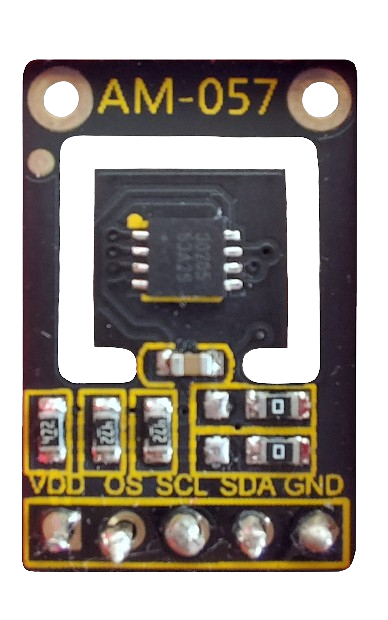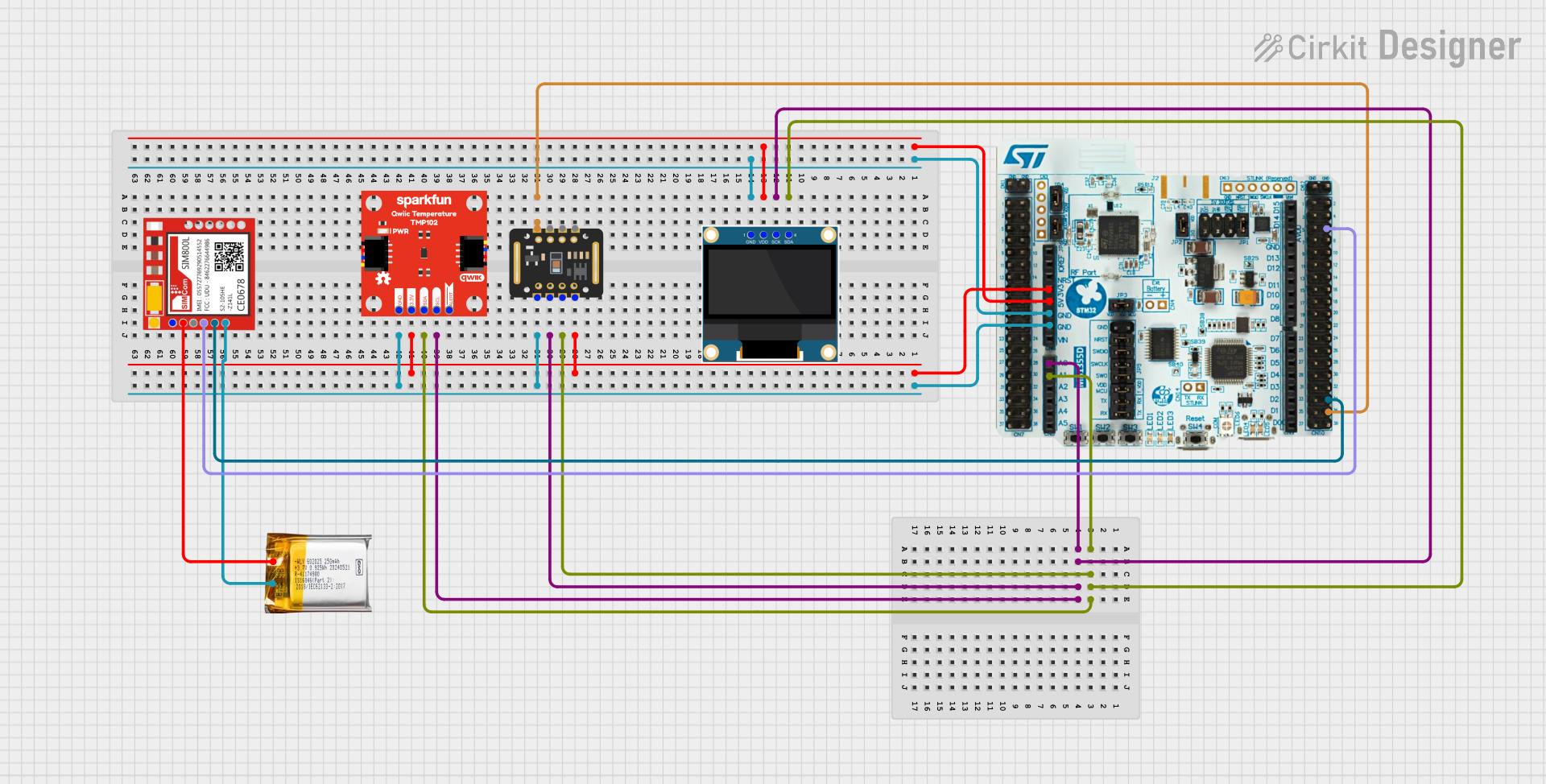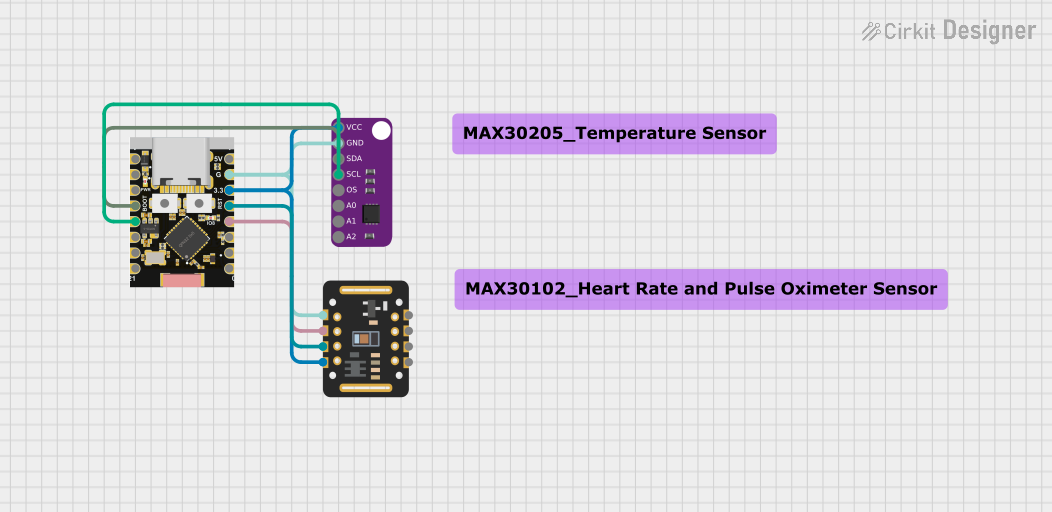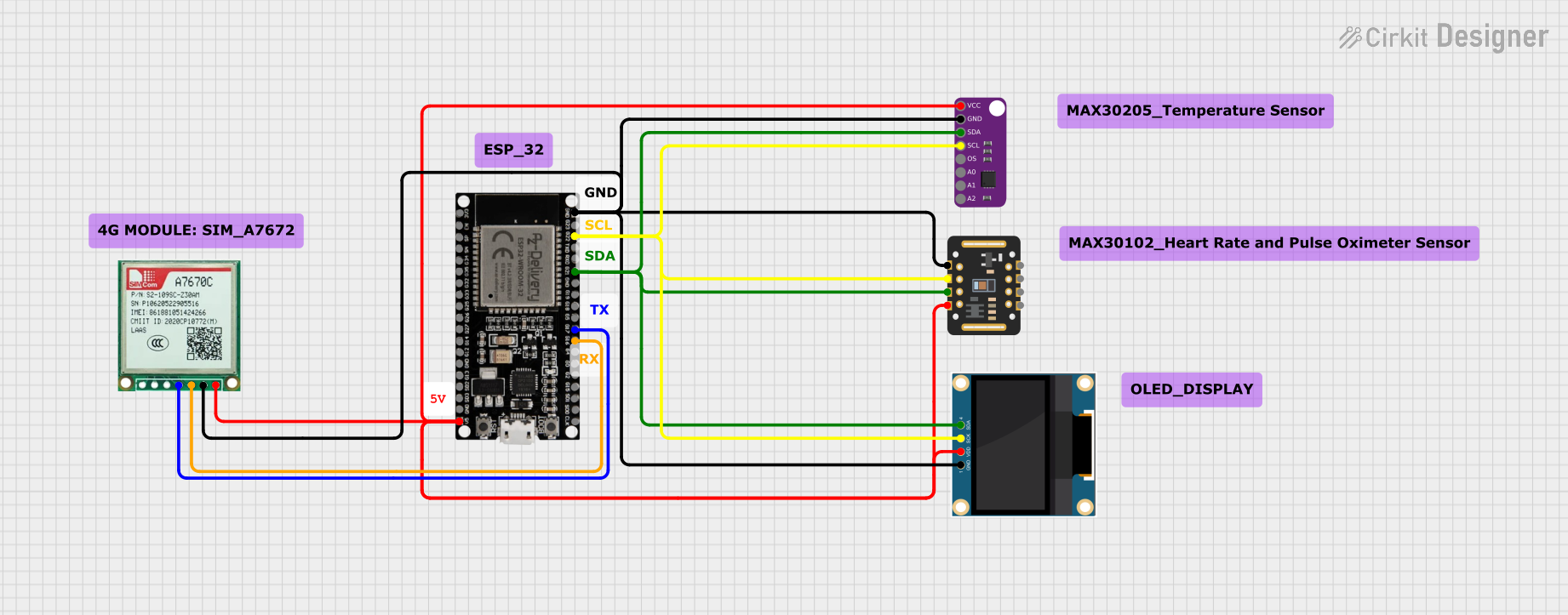
How to Use MAX30205: Examples, Pinouts, and Specs

 Design with MAX30205 in Cirkit Designer
Design with MAX30205 in Cirkit DesignerIntroduction
The MAX30205 is a high-accuracy digital temperature sensor designed to measure temperatures in the range of -40°C to +125°C with a resolution of 0.0625°C. It communicates via an I2C interface, making it easy to integrate into microcontroller-based systems. The sensor is optimized for low power consumption, making it ideal for wearable devices, portable electronics, and medical applications such as body temperature monitoring.
Explore Projects Built with MAX30205

 Open Project in Cirkit Designer
Open Project in Cirkit Designer
 Open Project in Cirkit Designer
Open Project in Cirkit Designer
 Open Project in Cirkit Designer
Open Project in Cirkit Designer
 Open Project in Cirkit Designer
Open Project in Cirkit DesignerExplore Projects Built with MAX30205

 Open Project in Cirkit Designer
Open Project in Cirkit Designer
 Open Project in Cirkit Designer
Open Project in Cirkit Designer
 Open Project in Cirkit Designer
Open Project in Cirkit Designer
 Open Project in Cirkit Designer
Open Project in Cirkit DesignerCommon Applications
- Wearable health monitoring devices
- Medical thermometers
- Environmental monitoring systems
- Industrial temperature sensing
- Portable electronics requiring precise temperature measurements
Technical Specifications
The MAX30205 offers precise temperature sensing with minimal power consumption. Below are its key technical details:
Key Specifications
| Parameter | Value |
|---|---|
| Temperature Range | -40°C to +125°C |
| Temperature Resolution | 0.0625°C |
| Accuracy | ±0.1°C (37°C to 39°C range) |
| Supply Voltage (VDD) | 2.7V to 3.3V |
| Communication Interface | I2C (up to 400kHz) |
| Current Consumption | 600µA (typical) |
| Shutdown Current | 0.1µA (typical) |
| Package | 8-pin TDFN |
Pin Configuration and Descriptions
The MAX30205 is available in an 8-pin TDFN package. Below is the pinout and description:
| Pin Number | Pin Name | Description |
|---|---|---|
| 1 | SDA | Serial Data Line for I2C communication. |
| 2 | SCL | Serial Clock Line for I2C communication. |
| 3 | ALERT | Over-temperature alert output (active low, open-drain). |
| 4 | GND | Ground connection. |
| 5 | VDD | Power supply input (2.7V to 3.3V). |
| 6 | ADD0 | I2C address selection bit 0. |
| 7 | ADD1 | I2C address selection bit 1. |
| 8 | NC | No connection (leave unconnected or connect to GND). |
Usage Instructions
The MAX30205 is straightforward to use in a circuit, thanks to its I2C interface. Below are the steps and considerations for integrating it into your design.
Circuit Connection
- Power Supply: Connect the VDD pin to a 3.3V power source and the GND pin to ground.
- I2C Interface: Connect the SDA and SCL pins to the corresponding I2C pins on your microcontroller. Use pull-up resistors (typically 4.7kΩ) on both lines.
- Address Selection: Configure the ADD0 and ADD1 pins to set the I2C address. These pins can be connected to VDD or GND to select one of four possible addresses.
- Alert Pin: Optionally, connect the ALERT pin to monitor over-temperature conditions.
Example Code for Arduino UNO
Below is an example of how to interface the MAX30205 with an Arduino UNO using the Wire library:
#include <Wire.h>
#define MAX30205_ADDRESS 0x48 // Default I2C address (ADD0 = GND, ADD1 = GND)
void setup() {
Wire.begin(); // Initialize I2C communication
Serial.begin(9600); // Start serial communication for debugging
// Configure MAX30205 (optional: set configuration register if needed)
Wire.beginTransmission(MAX30205_ADDRESS);
Wire.write(0x01); // Point to configuration register
Wire.write(0x00); // Default configuration (continuous conversion mode)
Wire.endTransmission();
}
void loop() {
float temperature = readTemperature();
Serial.print("Temperature: ");
Serial.print(temperature);
Serial.println(" °C");
delay(1000); // Wait 1 second before the next reading
}
float readTemperature() {
Wire.beginTransmission(MAX30205_ADDRESS);
Wire.write(0x00); // Point to temperature register
Wire.endTransmission();
Wire.requestFrom(MAX30205_ADDRESS, 2); // Request 2 bytes of data
if (Wire.available() == 2) {
uint8_t msb = Wire.read(); // Most significant byte
uint8_t lsb = Wire.read(); // Least significant byte
int16_t rawTemp = (msb << 8) | lsb; // Combine bytes into a 16-bit value
return rawTemp * 0.00390625; // Convert to Celsius (0.0625°C per LSB)
}
return NAN; // Return NaN if data is not available
}
Best Practices
- Use decoupling capacitors (e.g., 0.1µF) near the VDD pin to reduce noise.
- Ensure proper pull-up resistors are used on the I2C lines.
- Avoid placing the sensor near heat sources to prevent inaccurate readings.
- If using the ALERT pin, configure it in your microcontroller to handle over-temperature events.
Troubleshooting and FAQs
Common Issues
No I2C Communication:
- Cause: Incorrect wiring or missing pull-up resistors.
- Solution: Verify SDA and SCL connections and ensure pull-up resistors are present.
Inaccurate Temperature Readings:
- Cause: Sensor placed near heat sources or poor PCB layout.
- Solution: Relocate the sensor to a thermally stable area and ensure proper grounding.
Device Not Responding on I2C:
- Cause: Incorrect I2C address or address pin configuration.
- Solution: Check the ADD0 and ADD1 pin connections and verify the address in your code.
ALERT Pin Always Active:
- Cause: Over-temperature threshold set too low.
- Solution: Adjust the over-temperature threshold in the configuration register.
FAQs
Q: Can the MAX30205 operate at 5V?
A: No, the MAX30205 operates within a supply voltage range of 2.7V to 3.3V. Using 5V may damage the device.
Q: How do I set the over-temperature threshold?
A: Write the desired threshold value to the over-temperature register via the I2C interface.
Q: Can I use the MAX30205 for body temperature monitoring?
A: Yes, the MAX30205 is designed for high accuracy and is suitable for medical applications, including body temperature monitoring.
Q: What is the default I2C address of the MAX30205?
A: The default I2C address is 0x48 when both ADD0 and ADD1 are connected to GND.